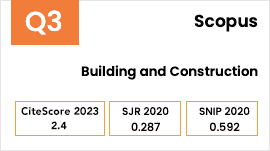2Department of Mechanical Engineering, Sardar Vallabhbhai Patel National Institute of Technology, Surat, Gujarat, 395007, India
Abstract
The most widely utilized refrigerant in car air conditioners today is still R134a, particularly in developing nations, but its global warming potential is very high (1430). The use of high global warming potential working substances is progressively prohibited and restricted by the F-gas act and the Kigali Amendment in developing and developed nations. R1234yf has been the subject of thermodynamic research as a potential replacement for R134a in vehicle air conditioning systems. Compared to R134a, R1234yf performs somewhat inferior, that can be improved by incorporating an internal heat exchanger into the existing system. Refereeing to the literature available, computational fluid dynamics analysis of the internal heat exchanger for an automobile air conditioning system with refrigerant R1234yf is rarely observed. Hence the novel concept of computational fluid dynamics analysis of thermally designed internal heat exchanger is focused here. This study analyzes the thermal design of an internal heat exchanger and its impact on the coefficient of performance for R1234yf and R134a. And computational fluid dynamics analysis of the thermal designed internal heat exchanger is performed to finalize the dimension of the internal heat exchanger. For similar cooling capacity, the system with refrigerant R134a performance is not much af-fected by the application of an internal heat exchanger. Its COP increases from 3.636 to 3.676, i.e., only 1.09%. While the performance gap of the system with refrigerant R1234yf as compared to the system with R134a without an internal heat exchanger is 5.17%, while the gap is decreased up to 3.16% with an internal heat exchanger. Identical results are obtained in computational fluid dynamics analysis, with an increment in the internal heat exchanger length, heat transfer increases as well, and the outlet temperature meets the necessary level within a tolerable pressure drop






















